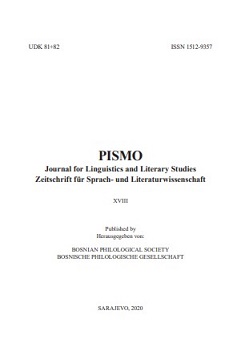O italijanskoj postmoderni i njenim karakternim osobinama
On the Postmodern and its features in Italian Literature
Author(s): Mirza MejdanijaSubject(s): Studies of Literature, Post-War period (1950 - 1989), Transformation Period (1990 - 2010), Italian literature
Published by: Bosansko filološko društvo
Keywords: the end of history; metanovel; quotations; intertextuality; literary play;
Summary/Abstract: The 1960s and the 1970s in Italian literature were marked by a standstill in narratology, that could no longer find any strength to renew its own expressive and representative forms. It seemed that both art and literature were facing death. It was the period when the postmodern was emerging and when novels started discovering some of its features, also emphasizing significant turning points in the history of twentieth-century literature. This was the moment that marked the end of history and a standstill of reality. It became impossible to produce something new, and, related to creativity in literature, art, theatre and cinema, what prevailed was a rejection to seek unknown solutions, as well as a tendency to repeat something that was already familiar or to write what had already been written or to resort to the past styles in order to combine them, constructing thus texts and works as collections of quotations. There is a distinction between three phases of the Italian postmodern: the beginning phase, the phase of the “true and genuine postmodern”, and the postmodern of the new generations that started from the assumptions already solidified by the previous generation. The mid-1990s mark the end of the postmodern. The masterpieces of the Italian postmodern are If on a Winter’s Night by Italo Calvino and The Name of the Rose by Umberto Eco, published in 1979 and 1980, respectively. In the 1980s, the voice of the generation novel was heard, which, in keeping with its American role model, embodied the anxiety and disorientations of the youth. In this paper, we have attempted to define the phases of the Italian postmodern more precisely, to determine its beginning and end, as well as to establish its characteristics.
Journal: Pismo - Časopis za jezik i književnost
- Issue Year: 2020
- Issue No: 18
- Page Range: 97-111
- Page Count: 15
- Language: Bosnian

